MANAGERIAL DISCRETION MODELS
1/7
There's no tags or description
Looks like no tags are added yet.
Name | Mastery | Learn | Test | Matching | Spaced |
|---|
No study sessions yet.
8 Terms
why do we have managerial discretion models
traditionally firms rise financial capital through bank loans but these are risky due to repayments ect
risk adverse banks restrict their lending which consequentially constrains the size of their firm
thus modern coporations relay on equity finance this has advatntages for firms amd banks:
vary dividens
non repayment
the risk is spread
for accepting risk shareholders receive ownership rights
the seperation of ownership from managmeent leads to manager discretion where managers persure different objectives to owners
what is the principle agent problem
managers persue different objectives to the owners this depends on if the owners are informed about the environment in which the firm operates
if fully informed managers maximise profits
if partially informed then managers have the discretion
this leads to the principle agent problem
explain the sales revenue maximisation PAP
managers get prestigre from the size of the business which they maximise
this is assoicated with imperfect competition
sales maximisation implies a higher level of output then profit maximiation
we can show this on the baumol model:
the firm must take a min profit to keep shareholders satisfied
this reflects asymetric information this is our minimum prifit constraint
if PIR>PIC then the constraint is non binding and produces QR
if PIR<PIC then the constraint is binding and produce between QR and QPI
only if PIC=PI then we prodice Qpi this is symetric infomration
owners wish managers to produce at QPi
managers with discretion will produce at QR which results in lwoer profits
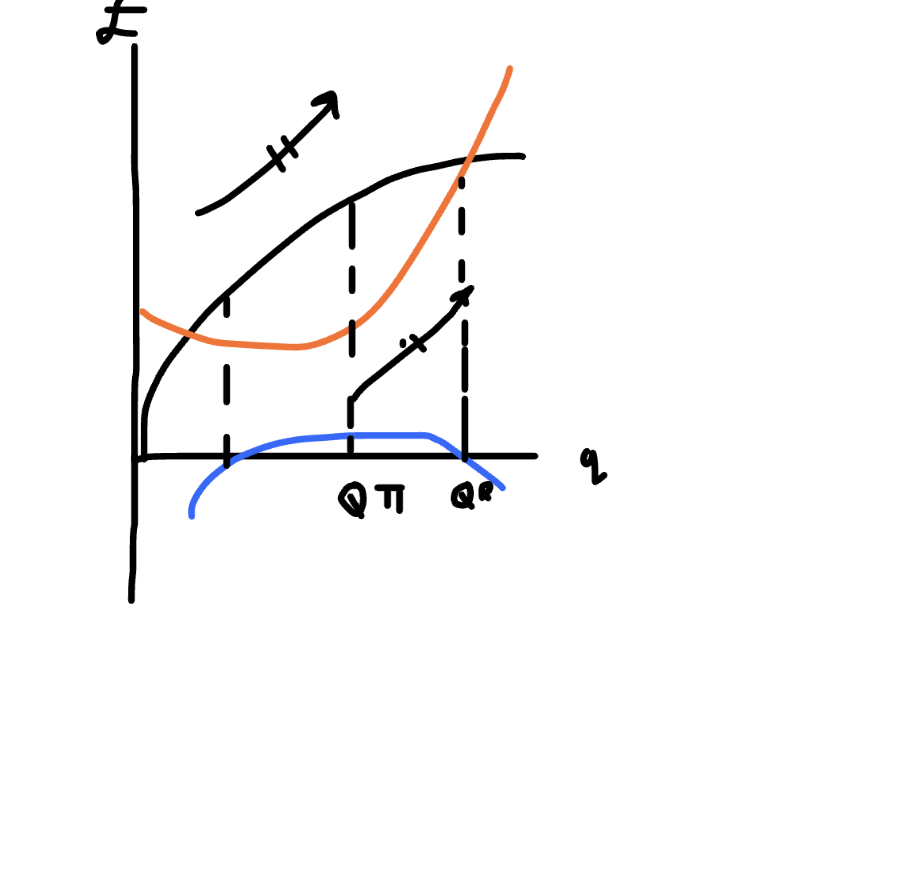
explain the expense preference model
managers maximise utility including a preference for expenses eg personal assistents
the manager still gets utility from the size of the business and any discrentionary profits that can be used after the shareholder have been satisfied and with which to fund perks
so our managers utlity function is u(QD) where Q= scale of the operation and D=discrentionary profts
we can show this in our williamson model
shareholders require a minimum acceptable profit level of pic
discretionary profits are D=pi-pic which now have value to our manager
managers will produce QW and get profits PIw
these profits are less then the profit max as theyre trading some profit for a rise in output
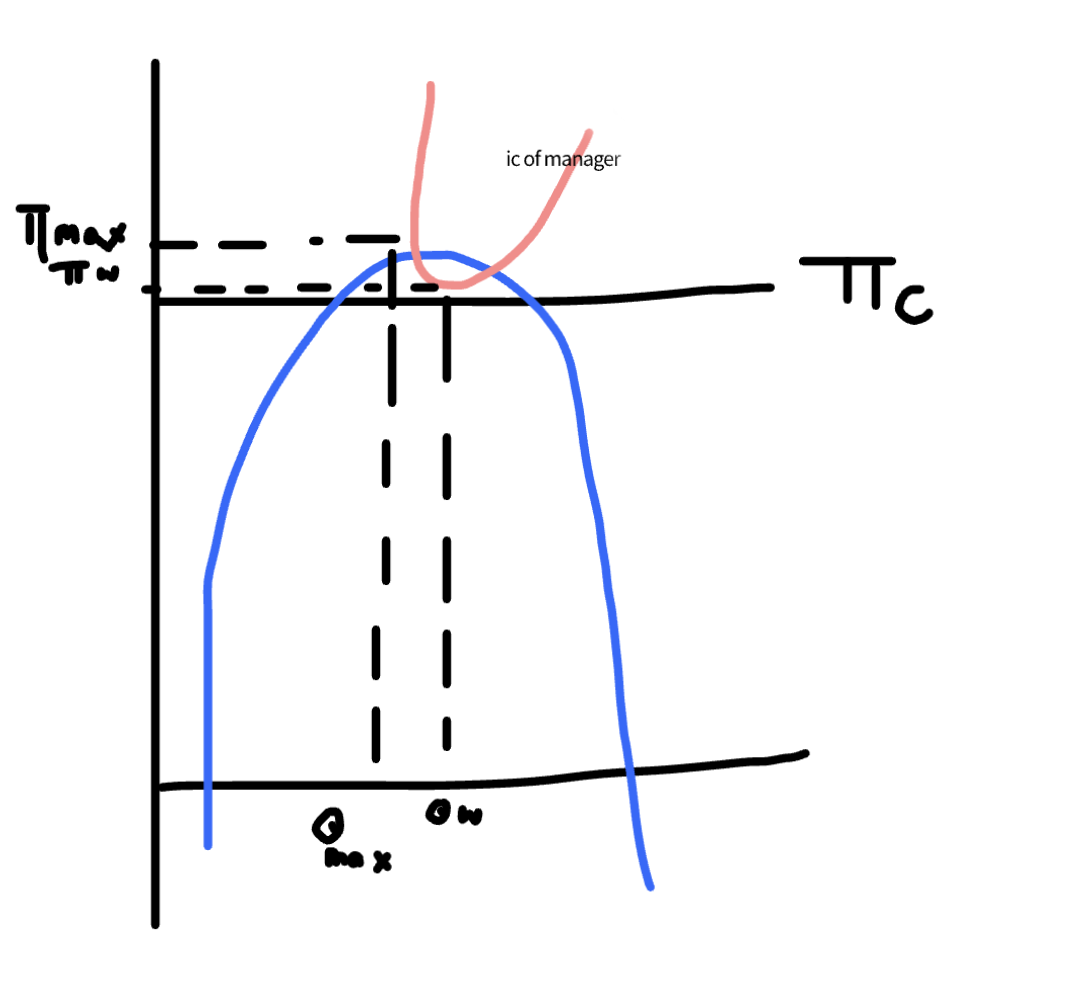
how do lump sum taxes impact the baumol model
taxes reduce output when the minimum profit constraint is bidning or becomes binding
PIC= binding min profit constraint
blue= profit line
if we carry on producing at QR’ we wont satisfy our profit constraint so managers will be forced to cut output to QR’
output dincreases in response to our lump sum tax
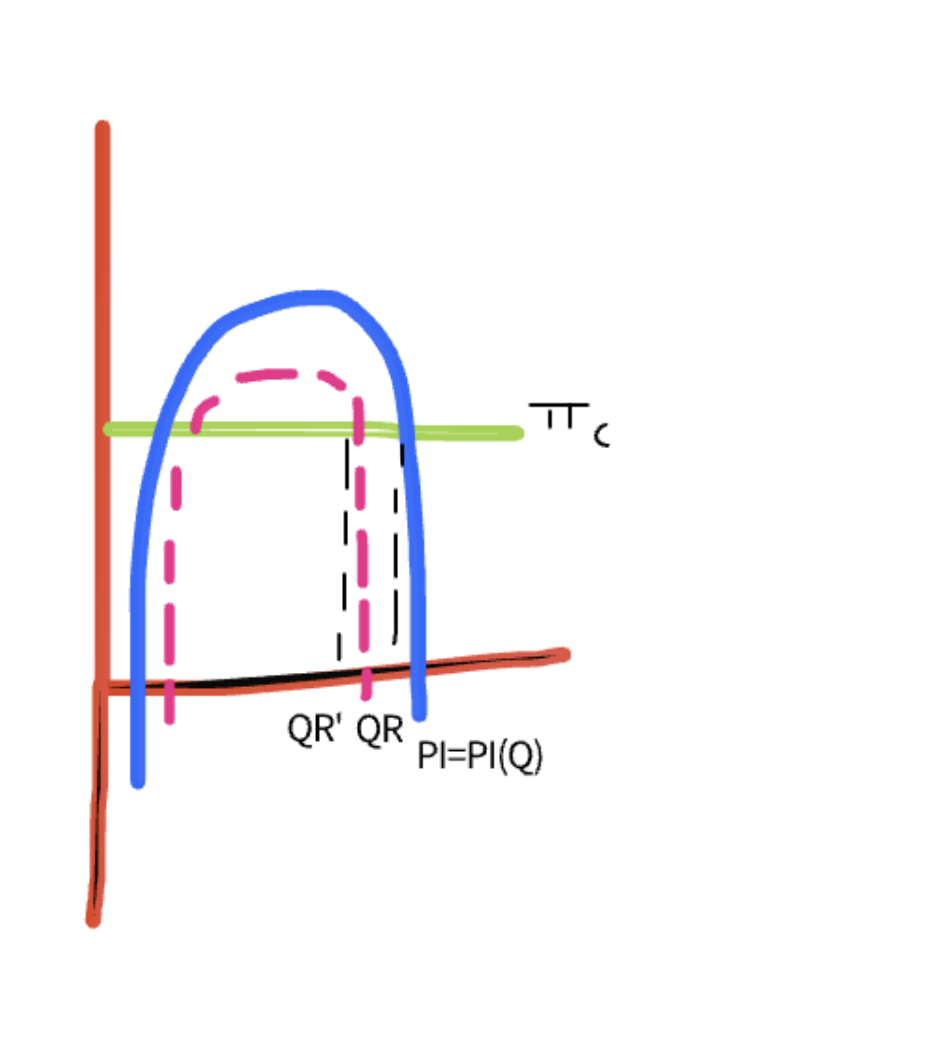
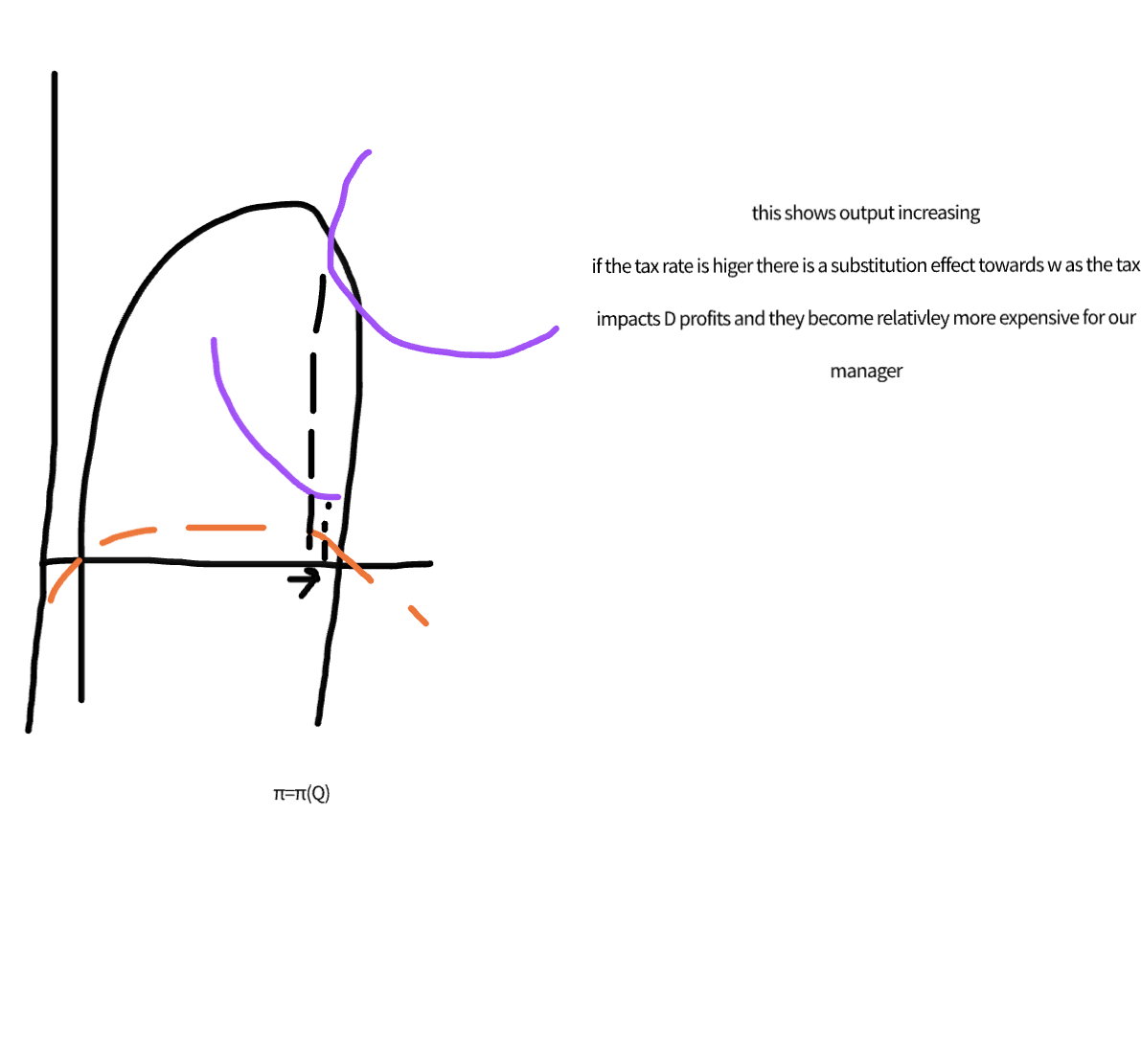
Show the effect of proportional tax in the williamson model
taxes may reduce otuput althorugh since the tax makes discretionary profits, D, more expensive it may rise output as the manager will substitute towards output
this substitution effect is larger for porpotional tax then lump sum and itll increase with our tax rate
output may change if the profit constraint, pic, adjusts to the tax
this dependsn on the preferecnces , ic, of our managers
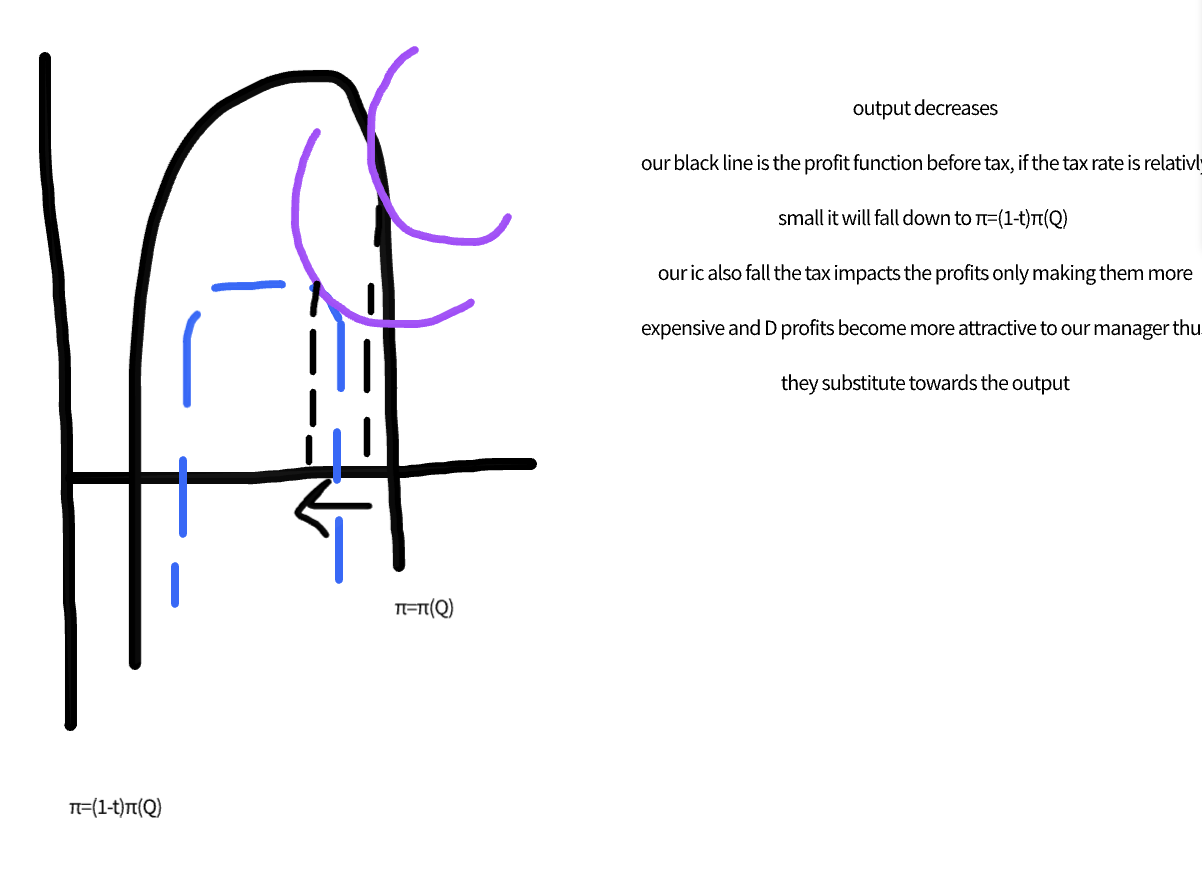
what are the alternative approaches
capatilist firms maximise profits, but we also have labour managed firms like john lewis
the labour force takes the entreprenurial role
eg if the firm is a price taker
their problem in the short run if k is fixed is:
max L w+π/L subject to π=pQ-wL-rK
this is that the firm maximises the residuel (value added profits) per employee: max L(pQ-rK/L).
the firm takes on more employees as long as they increase the averaeg earnings per head
we can show this on the optimal employment for labour managed firms diagram

what are the assumptions of the manager
they are
well informed
they optimise
there is no conflict in decision making